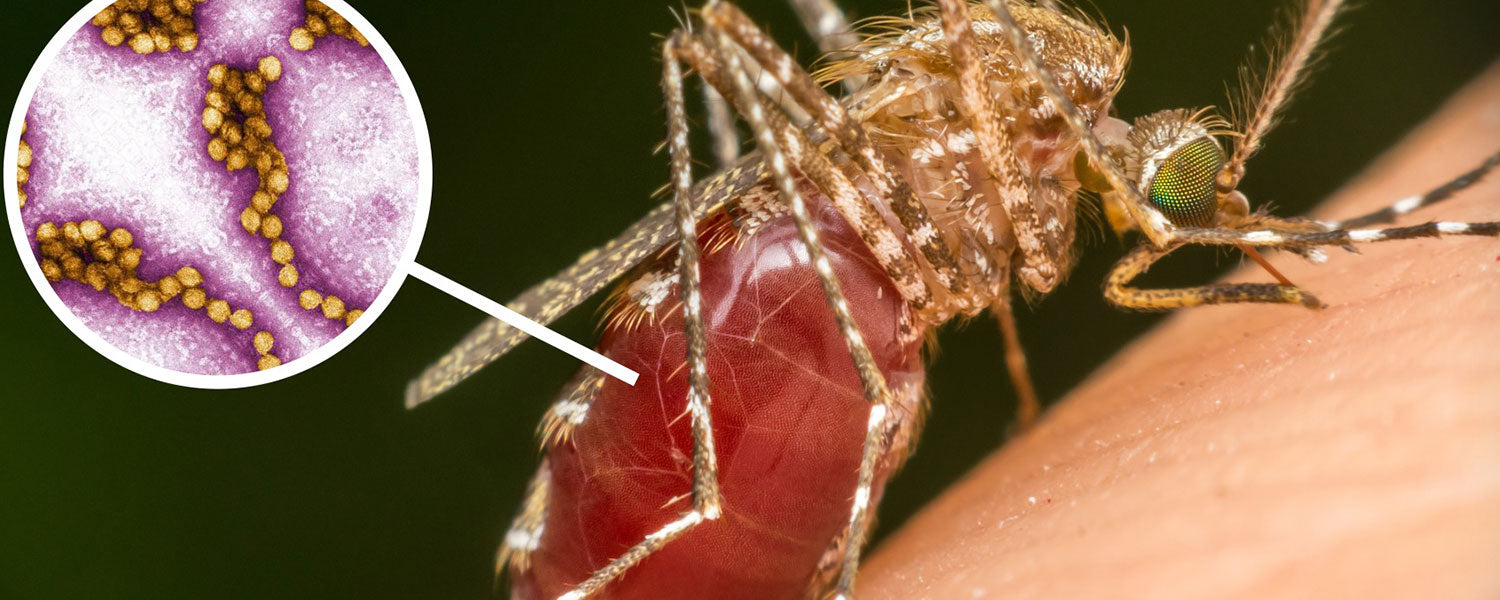In recent years, the Centers for Disease Control and Prevention (CDC) has raised concerns about the rapid spread of mosquito and tick infections. These tiny yet formidable creatures are responsible for transmitting a variety of diseases that can have serious consequences for humans. In this article, we will delve into the worrisome trend of mosquito and tick infections, explore the reasons behind their increasing prevalence, and provide valuable insights on how to safeguard yourself and your family from these health risks.
The Mosquito and Tick Epidemic: A Growing Concern
Mosquito and Tick Infections Are Spreading Rapidly According To The CDC, and the numbers are nothing short of alarming. These blood-sucking insects have become efficient vectors for various pathogens, leading to a surge in infections across the United States. Here's a closer look at the key issues contributing to this concerning trend:
Climate Change and Favorable Conditions
Climate change has altered the geographical distribution of mosquitoes and ticks, creating more favorable environments for their proliferation. Rising temperatures and altered rainfall patterns have allowed these pests to thrive in areas previously considered low-risk zones.
Global Travel and Imported Diseases
Increased global travel and trade have facilitated the spread of diseases carried by mosquitoes and ticks. People unknowingly bring infected insects back to their home regions, introducing new pathogens to local ecosystems.
Lack of Public Awareness
Many individuals underestimate the potential risks posed by mosquito and tick bites. Lack of awareness about preventive measures and symptoms of infections often leads to delayed treatment.
Inadequate Vector Control
Efforts to control mosquito and tick populations have not kept pace with their increasing numbers. Traditional methods of vector control are proving insufficient in the face of evolving insect populations.
Resilience to Insecticides
Some mosquito and tick species are developing resistance to commonly used insecticides, making it harder to combat their populations effectively.
The Health Implications
Mosquito-Borne Diseases
Zika Virus
The Zika virus, transmitted primarily by Aedes mosquitoes, has been linked to severe birth defects in newborns and neurological disorders in adults.
West Nile Virus
West Nile virus, spread by Culex mosquitoes, can lead to flu-like symptoms and, in severe cases, neurological complications such as encephalitis and meningitis.
Dengue Fever
Dengue fever, transmitted by Aedes mosquitoes, causes high fever, severe joint and muscle pain, and in some cases, a potentially fatal condition called dengue hemorrhagic fever.
Tick-Borne Diseases
Lyme Disease
Lyme disease, transmitted by black-legged ticks, can result in joint pain, fatigue, and even neurological issues if left untreated.
Rocky Mountain Spotted Fever
Rocky Mountain spotted fever, carried by American dog ticks, can lead to high fever, rashes, and organ failure if not promptly treated.
Anaplasmosis
Anaplasmosis, transmitted by black-legged ticks, causes flu-like symptoms and can have serious consequences for individuals with weakened immune systems.
Protecting Yourself and Your Family
Mosquito Prevention Tips
- Use Insect Repellent: Apply an EPA-approved insect repellent to exposed skin and clothing.
- Wear Protective Clothing: Cover up with long sleeves, pants, and socks, especially during peak mosquito activity times.
- Eliminate Breeding Sites: Remove stagnant water from around your home to prevent mosquito breeding.
- Install Screens: Use window and door screens to keep mosquitoes out of your living spaces.
Tick Prevention Tips
- Check for Ticks: After spending time outdoors, thoroughly check your body and clothing for ticks.
- Use Tick Repellent: Apply tick repellent on exposed skin and clothing before heading into tick-prone areas.
- Wear Appropriate Clothing: Opt for light-colored clothing to spot ticks more easily, and tuck pants into socks when in tick-infested areas.
- Landscape Maintenance: Keep your yard tidy by trimming tall grass and shrubs to reduce tick habitats.
FAQs
Q: Can mosquito and tick infections be fatal? A: Yes, some diseases transmitted by mosquitoes and ticks can be fatal if left untreated. Prompt medical attention is crucial.
Q: Are there vaccines available for mosquito and tick-borne diseases? A: Vaccines are available for some diseases like yellow fever and Japanese encephalitis. However, not all diseases have vaccines, so prevention is key.
Q: How can I identify a tick bite? A: Tick bites often appear as small, red bumps and can be accompanied by itching. Look out for a tick still attached to your skin.
Q: Is it safe to travel to areas with high mosquito and tick activity? A: Travelers should be cautious when visiting such areas. Consult with a healthcare provider and follow preventive measures.
Q: What should I do if I find a tick on my body? A: Use fine-tipped tweezers to grasp the tick's mouthparts as close to your skin as possible and gently pull it out. Clean the bite area and monitor for any signs of infection.
Q: Are there natural remedies for mosquito and tick protection? A: Some natural repellents like citronella oil or neem oil may provide limited protection, but they are not as effective as EPA-approved repellents.
Conclusion
As Mosquito and Tick Infections Are Spreading Rapidly According To The CDC, it is crucial to stay informed and take proactive steps to protect yourself and your loved ones. By following the recommended preventive measures and staying vigilant, you can reduce the risk of mosquito and tick-borne infections. Remember, awareness and action are your best allies in this battle against these tiny but formidable foes.

